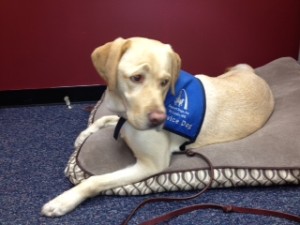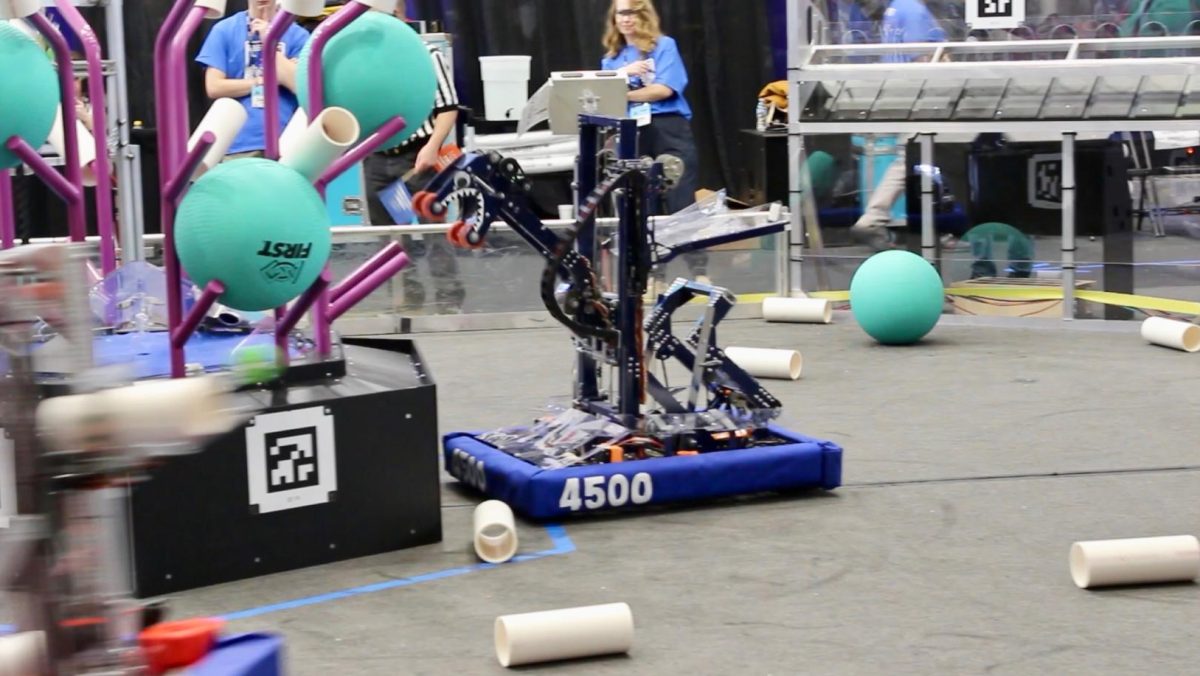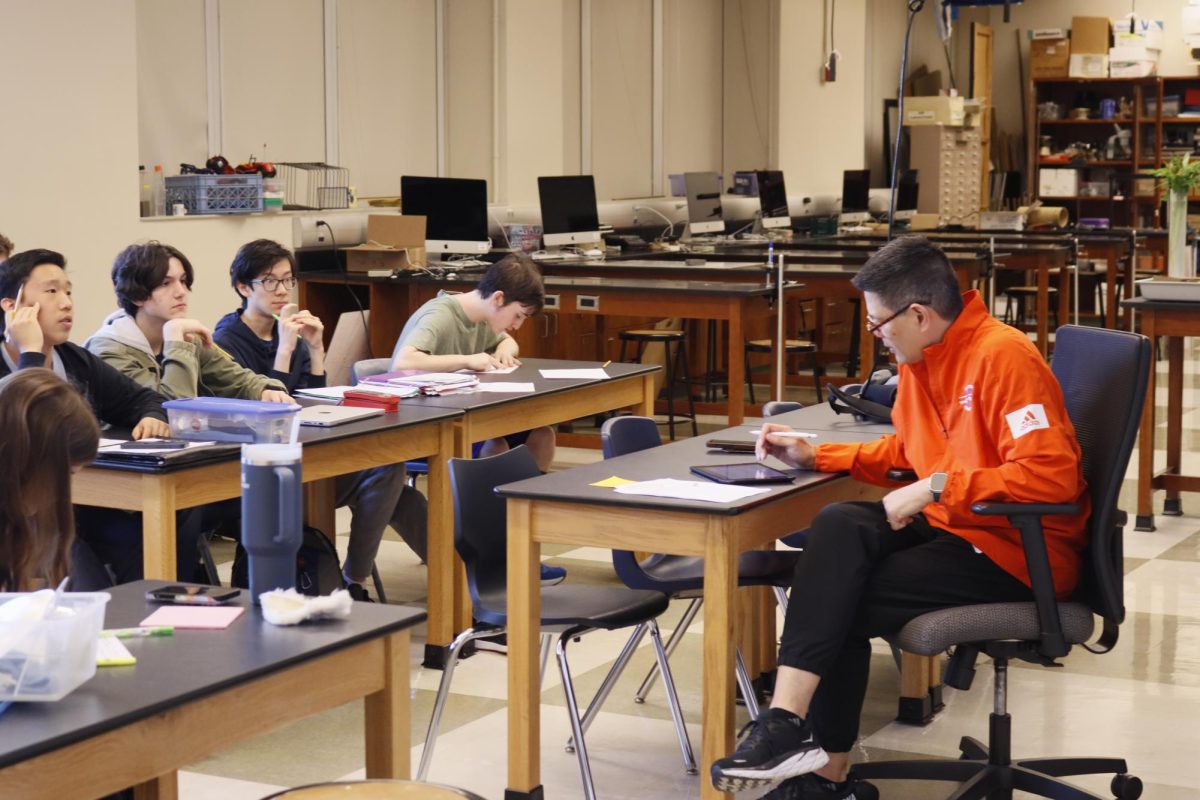Dibs is one of the favorite teachers at Carman Trails Elementary.  He goes to work every day to be of assistance to the counselor at Carman Trails, Shannon Hoelscher. “She uses him in a variety of capacities, and empathy is one of those,†said Paul Hoelscher, the proud co-owner of Dibs, a service dog. His wife, who takes the dog to work with her everyday said, “He is a real good model for self-control, for following directions, and just sort of the basic that little kids need to learn to be successful in the classroom.â€
The Hoelscher family adopted their yellow lab, Dibs, in May of 2012. Â In order to receive a support dog, the Hoelschers had to apply to an organization called Support Dog.
“When [Shannon] applied, she had to put together a plan to show the organization that the dog is going to be used in a helping service capacity on a daily basis,†Hoelscher said.

Shannon felt the need for a service dog as a means to help encourage and reward some of her students with different learning disabilities. “Individually, we have kids with behavior and we create individual patterns of behavior support plans. With those kiddos they have a real specific goal that they’re working on in the classroom.â€
Dibs’ assistance consists of providing different ways to help students learn. Shannon helps students with reading disabilities by encouraging them to read to the dog.“Dibs is part of some small group reading intervention within the building. He will actually got a small group with a reading specialist. They kids read to him and it just kind of keeps them focused on their reading. They can research students with ADHD and a dog increases a student’s engagement.â€
 Dibs is also used in many of Shannon’s lessons to exemplify patience or obedience. “The kids are starting to learn appropriate school behaviors. He can model those types of things. He can model listening the first time, and he can model self control because he knows how to wait for certain things.â€
Dibs is trained to help students learn and also to comfort people in times of trouble.
“If my eight-year-old is crying in bed, the dog will go up, not quite climb into bed but he’ll get as close as he possibly can to her, because he is trained when something is wrong to be that sort of support element,†Hoelscher said.
Having a service dog is a gift to the Hoelcher family, but to own the dog is hard work.  Every day Shannon has to keep training Dibs to make sure that he doesn’t forget what he has learned. Shannon is the initial trainer of the dog, so it is her job to keep Dibs well prepared.  Every three months Dibs has to go in for a checkup to make sure his skills as a service dog are up to pace.
“If there ever was a situation when he went in and he wasn’t up on his obedience, we would lose the dog,†Hoelscher said. “If there ever was a situation where the dog didn’t look healthy or well cared for, they literally will take them [the dogs] out of certain settings.â€

Support Dogs trains many different types of dogs to perform different duties around the country. From a very early age, the program observes each individual dog closely in order to determine the best area of service for that particular dog.
“As they are raising the dog they begin to sort of groom them and say, ‘Okay, what would this dog be good for?’†Hoelscher said.
A dog that shows a higher knack for obedience but might not be the sweetest dog would be used more as a service dog for a blind person or someone with a physical disability. For these reasons, the organization paired a veteran with a very large, strong dog who is very alert and attentive. Â The dog is very loyal to the veteran in order to make him feel safe and aware whenever the dog is around.
“I have [a dog] that is sort of lower on the obedience, but never would bite, never would freak out,†Hoelscher said.  Hoelscher’s dog, Dibs, is trained to show empathy and help with emotional therapy.
“We do a small part of the broader good that the organization does,†Hoelscher said.






